English
The main parts are cannabis flowers consisting of small fire like hair, tiny white crystals and juicy buds enclosed by small leaves.
Do you know every part of a cannabis plant?
Seeds
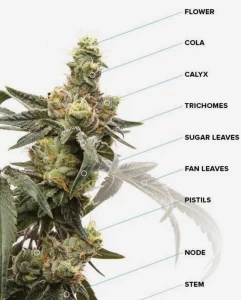
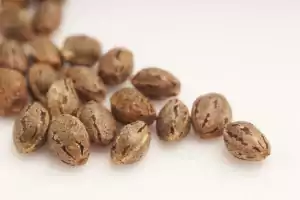
Cannabis seeds are produced by female cannabis plants and carry the genetical coding of both male and female, unless they are feminized, in that case the seeds carry only chromozomes XX, which predestinate them to be females as adult plants. Seeds have to germinate in order to produce roots. The rooting system serves as an anchor for stabilizing the plant at certain space and as a feeding machine.
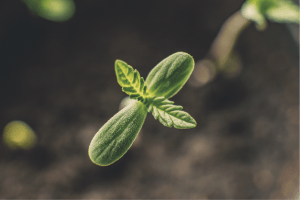
Cotyledon leaves
Those are first leaves you spot after succesful germination. They serve as the sign of healthy seedling.
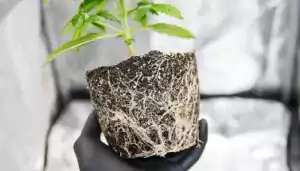
Roots
The rooting system of the plant functions as feeding machine and anchor. They keep the plant stable and feed it with water and nutritions.
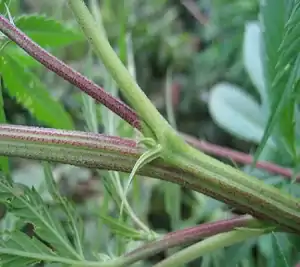
Stem
The main stem grows directly up in the air supports all other branches. Healthy stem gives the plant stability and proper structure. Almost every grower use FIM or topping the stem between fourth and fifth node in order to have better branching which results in having more buds.

Branches
They come out of the main stem and hold most of the fan leaves and flowers. Growers usually use many training techniques to achieve as much branching as they can. Here speak about bending, tying up, cutting and many others.
Node
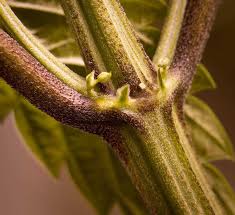
The node could be taken as a layer. It is the place where the branches are coming out of the stem. Nodes serves well for determining the sex of the plant. So called pre-flowers are in the connecting spot between stem and branch and they are showing us a sex of the plant usually earlier than buds.
The space between nodes is called internodal spacing and you will have the image of the probable height of the plant.

Fan Leaves
The most iconic part of the cannabis plant. They transform the energy from the light scource. They do not have any significant level of cannabinoids, but can be used for extracts.
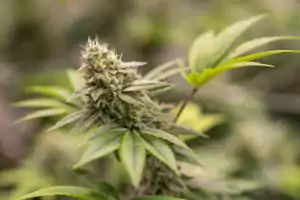
Bud
Cannabis flowers are commonly known as buds. Inside of this treasure you will most of the cannabinoids and terpenes. This compounds do have many benefits for your health. You will find uds only on female or hermafrodite cannabis plants.
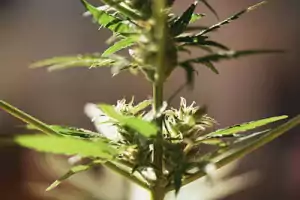
Cola
Cola, also known as the budsite describes places containing many buds at one place. Small colas are at the low levels and bigger colas are at the top parts of the branches.
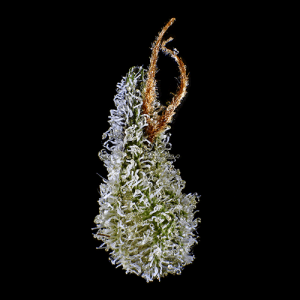
Bract and calyx
Bract serves as a protection for reproductive parts of the plant. It looks like leave in a shape of the teardrop it is covered by resin where is the highest concentration of cannabinoids.
Calyx is covered by bracts. It is the carrier of cannabis seed, which is the dominant part of the bud.
Stigma and pistil
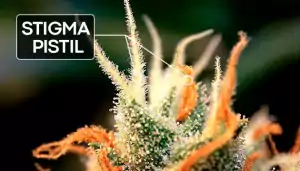
Inside a stigma you will find reproductive, they are tiny white or dark hairs at the top of calyxes. Stigma serve as a collectors for pollen from male cannabis plants. Stigmas do have a white coloration at the beginning of the growth and tend darken when the plants grows. They have the main role in the times of reproduction as cathers of pollen but they are not so potent.
Trichomes
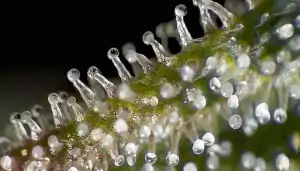
Despite their diminutive size, it’s hard to miss the crystal resin coverage on the cannabis bud. This resin is secreted by translucent, sponge-shaped glands on the leaves, stems and calyx. Plants originally developed trichomes for protection from predators and the elements. These clear mushrooms ooze aromatic oils called terpenes as well as therapeutic cannabinoids like THC and CBD.
Male and Female cannabis plant
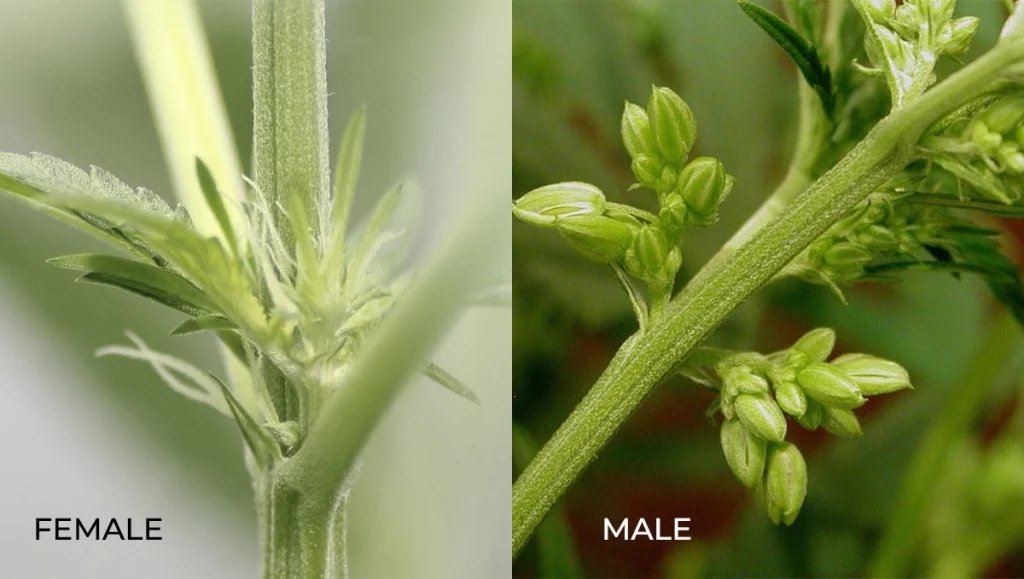
Cannabis is a dioecious plant, which means it can be male or female. Female plants produce a resin-secreting flowers and males produce pollen sacs near the base of the leaves. The male plants pollinate the females to initiate seed production but the buds we consume come from seedless female plants – these are called “sinsemilla”, meaning “seedless”.
Growers can ensure the sex of their plants by buying feminized seeds, witch are 99+% females or growing clones from female motherplant.
How can I tell if it is a male or female cannabis plant?
All you need to do is to look at the nodes in the right time. Then you can easily identify what it is going to be. Male plants do have small pollen sacs for pollen distribution and female cannabis plants do have stigmas for cathing the pollen. You can see the difference weeks before they start to serve its purpose in a reproduction and in this point you may call them pre-flowers. Pre-flowers begin to emerge even in late growth. After six weeks you should be able to find them and determine the sex of the plant.
What are hermaphrodite cannabis plants?
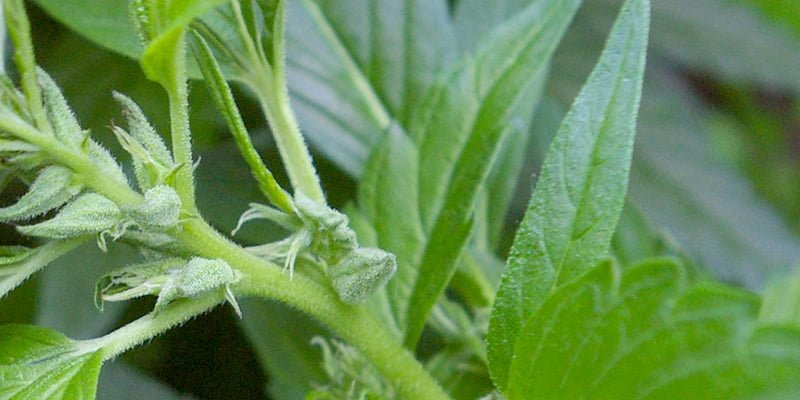
These types of cannabis have both male and female sex organs. They can therefore pollinate themselves. The plant “herms” if it is subjected to excessive stress. Stressors include damage to the plant, irregular light, bad weather, disease or nutritional deficiency.
There are then two types of hermaphrodite plants. The first is a plant with both sexes and the second type is plants with so-called banana plants (by appearance).
While both lead to pollen production, true hermaphrodite cannabis plants produce anthers that need to be ruptured; anthers are naked pollen-producing stamens.
Because this occurs when cannabis is stressed, it is important to monitor plants after they have been exposed to stressors: the cause is often high temperatures or light leaks indoors. A broken branch could repair itself and then turn into a hermaphrodite.
All that’s left to do is pick the right cannabis seeds and put your new knowledge into practice. So let’s do it.
Published by Jan Veselý
19/11/2021choose and buy cannabis seeds from our offer
our pleasure
























